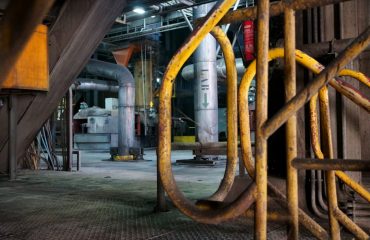The steel industry, long associated with high energy consumption and carbon emissions, is undergoing a significant transformation. Driven by environmental concerns and increasing regulatory pressure, manufacturers are embracing innovative technologies and processes to create energy-efficient steel products. This shift towards sustainability not only benefits the planet but also offers economic advantages and enhances the industry’s reputation.
1. The Energy Footprint of Traditional Steelmaking: Understanding the Challenge
Traditional steelmaking is an energy-intensive process. The primary method, the basic oxygen furnace (BOF) process, relies heavily on coke (a form of coal) as a fuel and reductant. This process generates significant carbon dioxide emissions, a major contributor to climate change. Furthermore, the high temperatures required for steel production consume vast amounts of energy, often derived from fossil fuels. The entire process, from raw material extraction to finished product, leaves a considerable environmental footprint. Understanding this challenge is crucial to appreciating the advancements made in energy-efficient steel production.
2. Innovative Steelmaking Technologies: Reducing Energy Consumption
The quest for energy-efficient steel production has spurred the development of several innovative technologies. These include:
- Electric Arc Furnaces (EAFs): EAFs utilize electricity to melt scrap steel, significantly reducing reliance on coke and associated emissions. They are particularly effective when using a high proportion of recycled steel, further minimizing the environmental impact. The efficiency of EAFs is constantly improving, with advancements in power supply and furnace design leading to lower energy consumption.
- Hydrogen-Based Steelmaking: This emerging technology replaces coke with hydrogen as a reductant in the steelmaking process. Hydrogen, when produced from renewable sources, offers a carbon-neutral alternative, paving the way for truly green steel production. While still in its developmental stages, hydrogen-based steelmaking holds immense potential for decarbonizing the industry.
- Optimized Process Control: Advanced process control systems utilize data analytics and machine learning to optimize energy consumption throughout the steelmaking process. By fine-tuning parameters such as temperature, oxygen flow, and alloy additions, these systems can minimize energy waste and improve overall efficiency.
3. The Rise of Recycled Steel: A Sustainable Solution
The use of recycled steel is a cornerstone of energy-efficient steel production. Scrap steel requires significantly less energy to process compared to producing steel from iron ore. Recycling steel reduces the need for mining, transportation, and processing of raw materials, resulting in lower energy consumption, reduced emissions, and a smaller environmental footprint. The increasing availability of scrap steel and advancements in recycling technologies are driving the growth of this sustainable approach.
4. Energy-Efficient Steel Products: Design and Application
The focus on energy efficiency extends beyond the production process to the design and application of steel products. Lightweight steel designs, for instance, reduce the overall weight of vehicles, buildings, and other structures, leading to lower fuel consumption in transportation and reduced energy demand for heating and cooling in buildings. Furthermore, the use of high-strength steel allows for the construction of lighter and more durable structures, further enhancing energy efficiency.
Innovative coatings and surface treatments can also improve the durability and lifespan of steel products, reducing the need for frequent replacements and associated energy consumption. These advancements highlight the holistic approach to energy efficiency, encompassing the entire lifecycle of steel products.
5. The Economic Benefits of Sustainable Steel: A Win-Win Situation
Embracing energy-efficient steel production is not just an environmental imperative; it also offers significant economic benefits. Reduced energy consumption translates to lower operating costs for steel manufacturers. The growing demand for sustainable materials provides a competitive advantage, attracting environmentally conscious customers. Furthermore, government incentives and carbon pricing mechanisms are increasingly rewarding companies that adopt sustainable practices. This creates a win-win situation, where environmental responsibility and economic profitability converge.
The transition to energy-efficient steel is an ongoing process, but the progress made so far is remarkable. By combining innovative technologies, sustainable practices, and a commitment to continuous improvement, the steel industry is paving the way for a greener future.
Tags: Energy-efficient steel, sustainable steel, green steel, recycled steel, steel recycling, electric arc furnace, hydrogen steelmaking




